All the detailed ways to look at your competitors’ ads data.
We process, merge and compare many different metrics from Facebook, Instagram, YouTube, Google and TikTok to give you simple ways to look at your competition.
Most of the time, you will want to look at our signature indicators:
In this article, we explain and focus on the other underlying metrics available on your dashboard.
Facebook & Instagram
Reach
This is the number of unique individuals who have seen an ad at least once. Therefore it’s the unique reach of one ad and it’s based on Meta’s EU transparency reach metrics.
Cumulative Unique Reach
If we add together this unique reach of multiple ads, we get the cumulative unique reach. This is the basis for our Share of Ads Voice indicator for Meta platforms. This approach provides a reliable and consistent measure for comparing the overall reach of different companies and campaigns.

The cumulative unique reach chart also shows:
- Estimated spend of the currently filtered dashboard.
- Comparison to the previous period (based on the timeframe you have selected)
Data limitations: each ad’s reach is calculated and provided independently by Meta’s transparency ad data. It is not technically possible for us to deduplicate data and to track and distinguish individual users across ads. As a result, some people might be counted more than once for multiple ads.
Read more about the differences between how Ravineo and Meta calculate metrics, including examples, in our comparison table at the bottom of this page.
Demographic

Shows the age and gender distribution of the ads’ true recipients – not the targeted audience. Demographics data is currently only provided by Meta (Facebook & Instagram).
Display Format
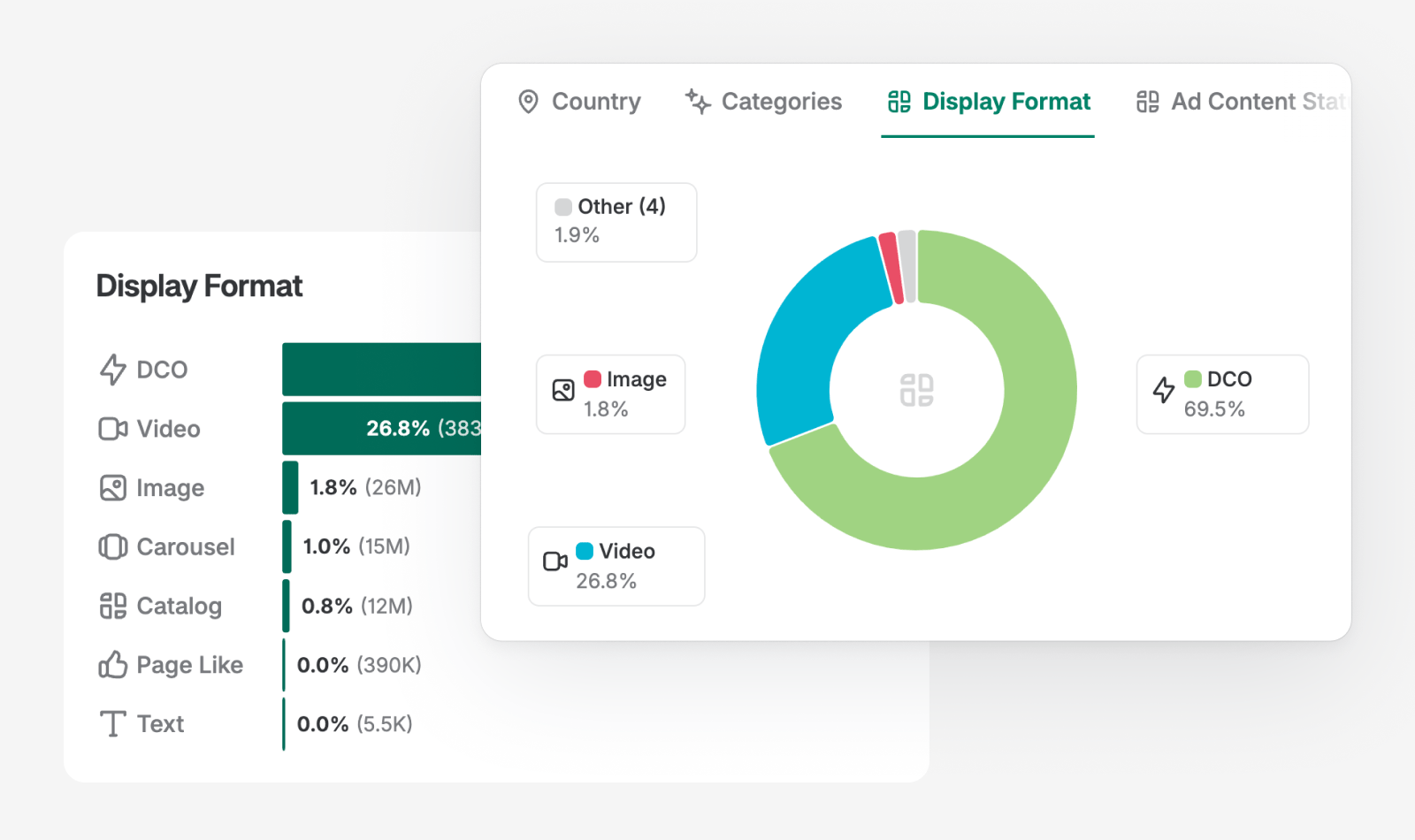
Display formats on Facebook & Instagram ase based on Meta’s campaign objectives.
- DCO (Dynamic Creative Optimization): Automatically creates and delivers multiple ad combinations, optimizing performance by matching creatives to audience preferences. Learn more
- Carousel: Displays multiple images or videos within a single ad, allowing users to swipe through different products or highlights
- Catalog: Uses product catalogs to automatically deliver personalized ads showing relevant products to the right audience
- Page Like: Designed to encourage users to follow a Facebook Page
- Video
- Image
- Text
Media Type
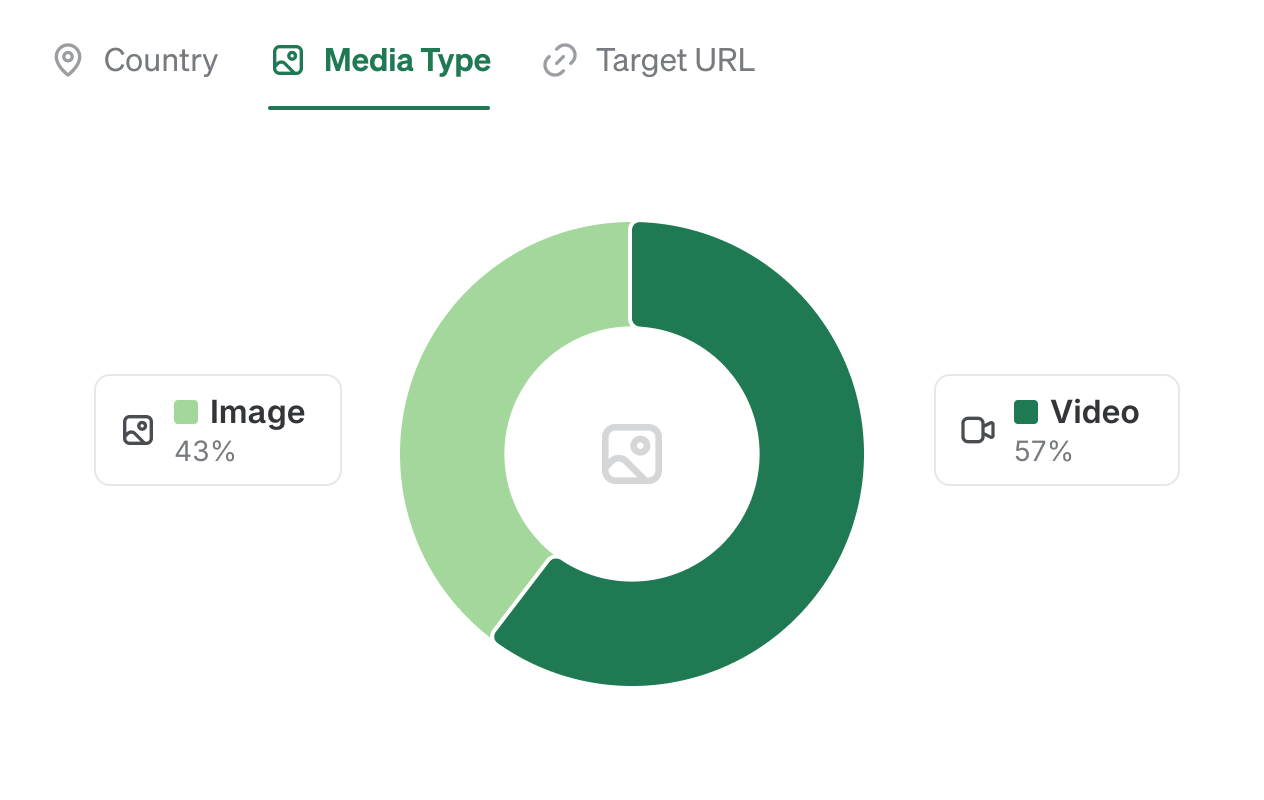
Facebook & Instagram ads appear either as images or as videos.
You might temporarily encounter a “Meme” media type. These are images where Meta has detected prominent text inside of the image itself.
Google & YouTube
Time Period Limitation
You will find that the most recent date you can select for the time period on Google & YouTube dashboards is about 3 months in the past. This is a limitation on Google’s side – they currently don’t provide ad data for the most recent 90 days.
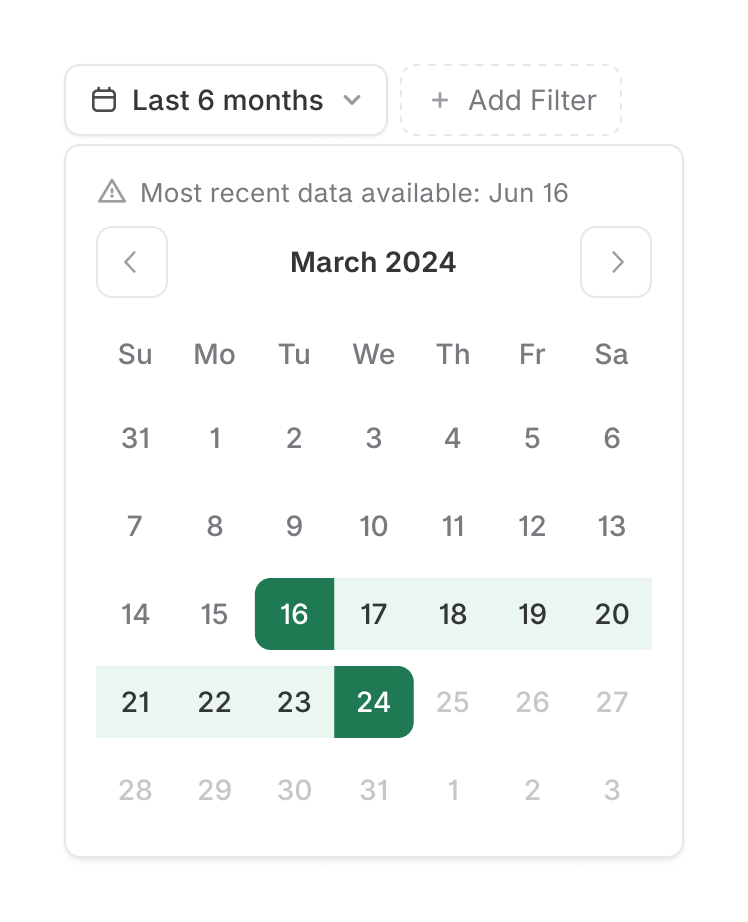
Impressions

This is the main metric used on Google & YouTube platforms to calculate Share of Ads Voice. It shows how many times an ad was displayed for view to an individual (in a sufficiently relevant manner, as reported by Google). Based on Google’s EU transparency metrics.
Google’s definition for ads on YouTube: “Impressions reveal your campaign's reach and how often viewers are exposed to the in-feed thumbnail, the initial in-stream portion of your video, or playback of your Shorts ad.”
Display Format
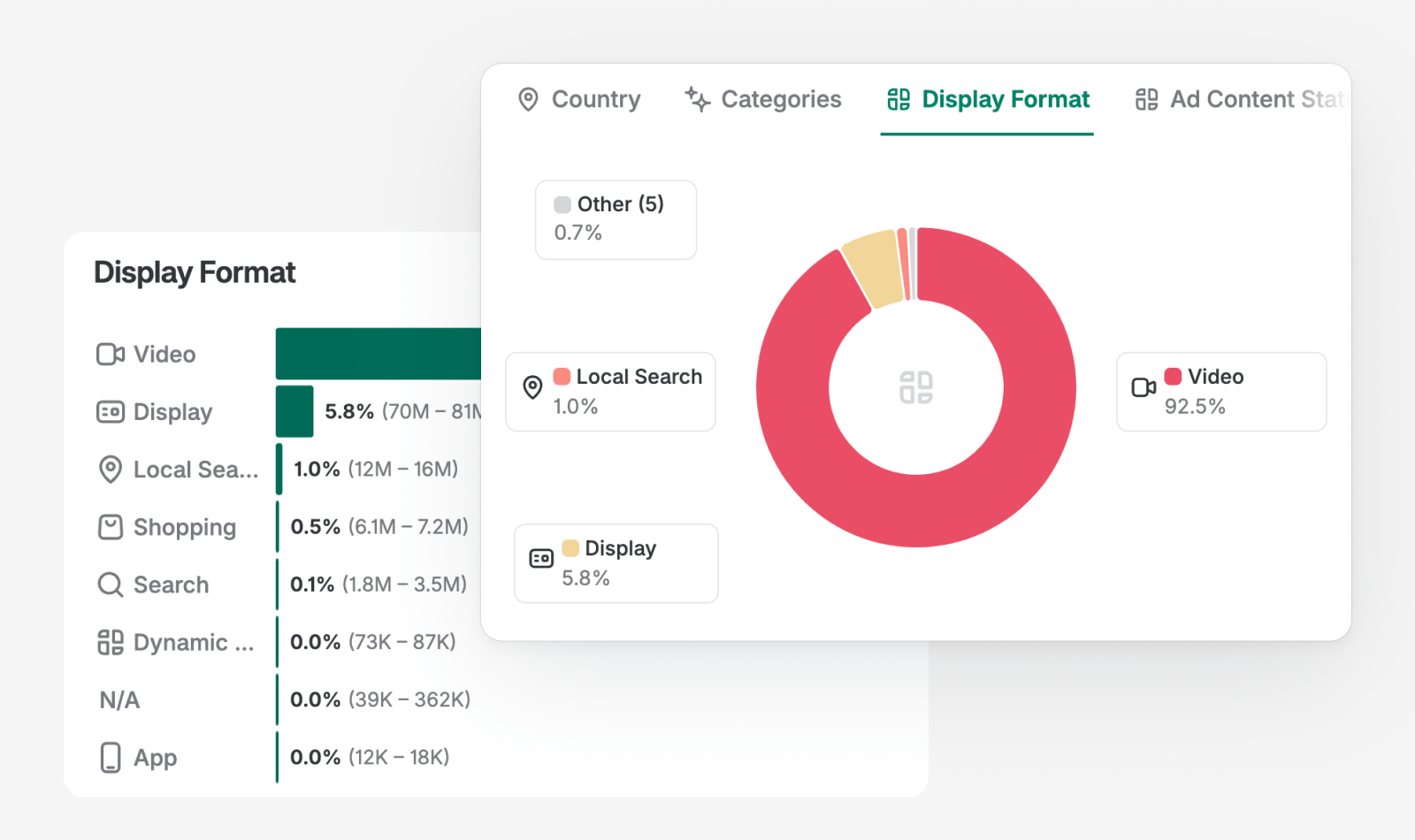
Ads on Google & YouTube are categorized into these display formats:
- Video: Ads displayed on YouTube and Google’s partner sites, appearing before, during, or after other videos.
- Display: Ads placed across Google's Display Network, including websites, Gmail, and apps.
- Search: Text-based ads appearing above or below Google search results.
- Local Search: Ads designed to drive foot traffic by prominently displaying business information when users search locally on Google Maps or Search.
- Shopping: Showcase product images, pricing, and store information directly in Google Search and Shopping results.
- App: Ads focused on driving app downloads, engagements, or in-app actions across Google’s network, including Search, Google Play, YouTube, and Display Network partners.
- Dynamic Display: Automatically generated ads personalized to users based on website content and visitor behavior.
Learn more in Google Ads Help center.
Media Type
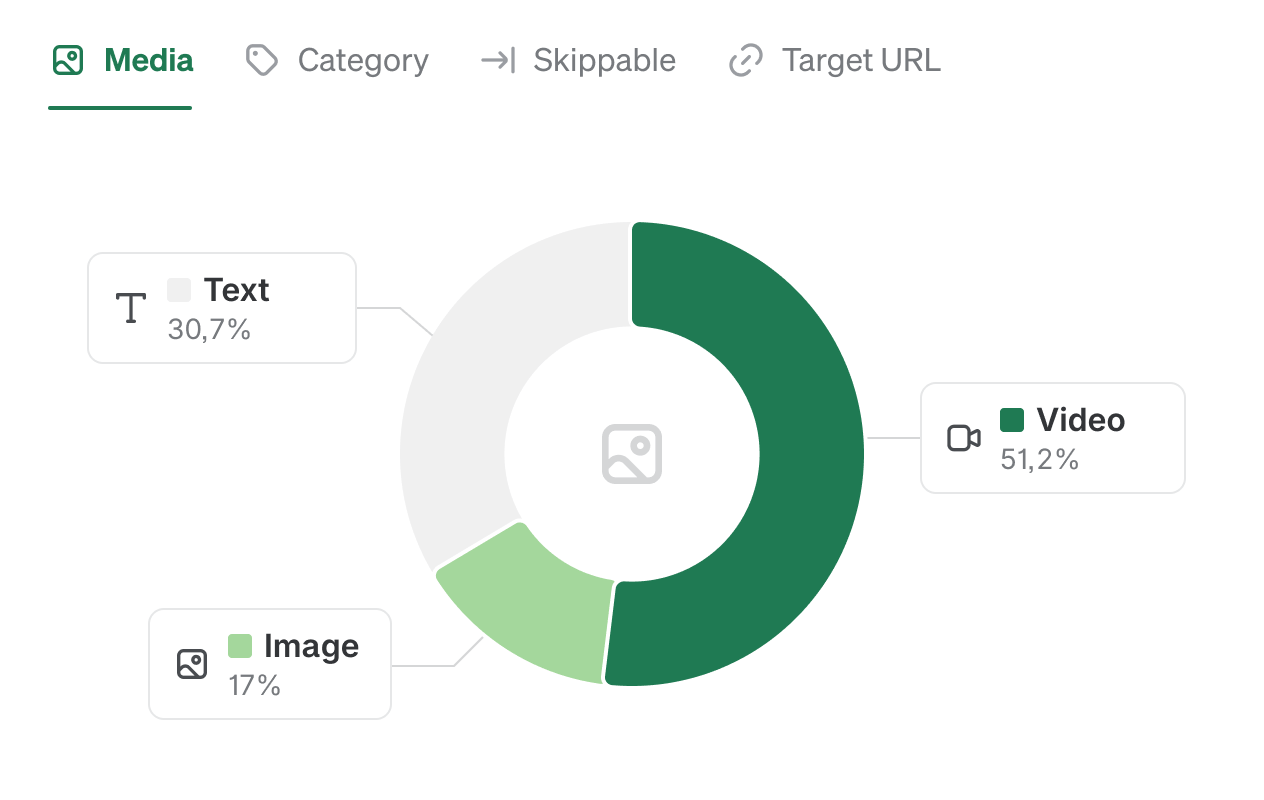
Not all ads on YouTube are videos, and not all ads on Google are images. This is due to the different formats and placements that Google uses throughout their ad networks.
Video Length (YouTube)

The length (duration) of video ads (not the amount seen before a viewer skipped it). Not all ads on YouTube are videos, and you can see the percentage of the ones that are next to the chart.
Platforms (Google)

The Google platforms chart shows delivered ads on each of their platform. You can read more about Google’s campaign types and platforms here.
GDN (Google Display Network) serves ads on third-party websites, apps and videos. Essentially Google ads but on websites and products other than Google’s.
Ravineo & Meta Metrics Comparison
Metric | Ravineo | Meta (Facebook & Instagram) |
|---|---|---|
Reach Calculation | Cumulative Unique Reach: Sum of the unique reach for each individual ad. Captures the total exposure across multiple ads. | Deduplicated Unique Reach: Tracks the actual number of distinct individuals reached across multiple ads, eliminating duplicates. |
Example (10 Ads) | If 10 ads each reach 1M people, Ravineo reports a total reach of 10M. | Meta would show a deduplicated reach of, for example, 1.4M unique people across the 10 ads. |
Deduplication | No Deduplication: Summing up the unique reach of each ad provides a standardized comparison of total exposure. | Deduplication Applied: Meta deduplicates users across ads within their platform, removing repeat counts of the same individual. |
Share of Ads Voice | Represents the total attention captured by summing the reach of all ads. Gives a comprehensive view of campaign reach. | Focus on Unique Reach: Meta’s deduplication aims for exact precision within the Meta ecosystem, reporting the total unique exposure. |
Comparison Strength | Cross-platform, comprehensive: Share of Ads Voice works across multiple platforms, giving a full-market view. | Platform-limited: Meta’s reach data is specific to its ecosystem, limiting comparisons outside of Facebook/Instagram. |
Data Limitation | Cross-Ad Comparison Possible: Ravineo does not deduplicate across multiple ads due to privacy and technical constraints. | Single-Ad Focus: Meta focuses on deduplicating reach within individual campaigns but doesn’t offer comprehensive cross-platform views. |